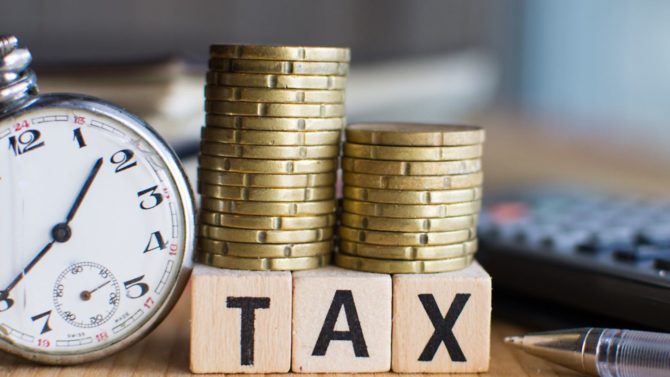All you need to know about the PAYE tax system in France

A new PAYE tax system is due to be introduced in France from 1 January 2019 – here is all you need to know about the system and how it affects you
Kehinde Dauda is a bilingual chartered accountant and owner of Greenwich Taxation Services greenwichtax.co.uk
How is the French tax system changing?
From 1 January 2019, France will operate a pay-as-you-earn (PAYE) system covering various types of income. This system was going to begin from 1 January 2018, however President Macron’s new French government has decided to postpone the introduction for a year in order to test and evaulate the system. The law will be amended in due course to confirm the postponement and until then we will not know exactly how the postponement will be implemented however we expect that the dates will simply be moved back one year. This new system will replace the current payment on account arrangement, whereby taxpayers make tax payments on account in the current year in respect of the prior year’s income. Anyone living and/or working in France and non-French residents with French source income are potentially affected. Households will still have to file a tax return, which is an integral part of the system, because the actual tax and income for a given year will be used in calculating the PAYE tax to deduct in the following two years.
___________________________________________________________________________
Related articles
Completing your French income tax return
10 French tax residency myths debunked
___________________________________________________________________________
The new PAYE system
The following types of income will be subject to the new PAYE system:
• Employment income (i.e. salary)
• Taxable state benefits (e.g. sickness, unemployment)
• Retirement income (pensions, lifetime annuities)
• Maintenance payments
• Non-French income taxable in France (including UK pensions paid to a UK retiree resident in France)
• Rental income (including French property rental income of UK residents)
• Business profits
The following types of income/gains are excluded from the system:
• Investment income (i.e. dividends or interest)
• Capital gains (real estate property and financial investments)
• Non-French income which is subject to French tax credit in accordance with a double tax treaty (UK rental income of a French resident falls into this category)
___________________________________________________________________________
Related articles
How do you challenge an incorrect tax bill in France?
___________________________________________________________________________
Collecting the PAYE tax at source
There are two ways the PAYE tax will be collected at source as income is earned.
1. Collected by the paying agent
Salaries, pensions and state benefits will be collected at source by whoever pays them. For salaries, this will be employers, for pensions it will be the pension administrators and for unemployment benefits it will be the national unemployment agency (Pôle emploi). The collecting agent is solely responsible for collecting the correct amount of tax and taxpayers themselves cannot be held liable for any errors or omissions. If the PAYE tax is collected but not paid over to the French tax authorities for whatever reason, the taxpayer is not responsible for paying the tax.
2 Collected by the French tax authorities
For other types of income (including business profits, rental income, maintenance payments, purchased lifetime annuities, non-French income), the French tax authorities will collect the tax either monthly or quarterly by direct debit from a bank account supplied by the taxpayer. The taxpayer will incur penalties if the tax authorities are unable to collect the tax, for example due to insufficient funds in the account.
___________________________________________________________________________
Related articles
Things you need to know about banking in France
___________________________________________________________________________
Calculating the PAYE tax
The calculation is actually a bit complex but there are two main elements: a fixed rate percentage and the PAYE income. The PAYE income is multiplied by the fixed rate to determine the PAYE tax to be collected. It is worth pointing out here that as a general rule, income is declared in France for the whole household (the two spouses/civil partners and their dependants). Social charges (currently totalling 15.5%) will also be applied to any income falling within the scope of the PAYE that is subject to these social charges, notably rental income.
Fixed rate of tax
The fixed rate is determined using the most recently assessed income. Given the deadlines for filing income tax returns in France, practically this means that income earned in a given year will be used to determine the fixed rate for September to December of the following year, and for January to August of the year after that. This is because the income earned in a given year is declared on a tax return in May of the following year; the tax bill is then issued in August which means September is the first month it can be used to determine the PAYE fixed rate. Below is a formula for determining the fixed rate – the tax and income are taken from the most recent year’s tax assessment for the whole household as mentioned above:
(Tax liability before tax credits and reductions / Total income within scope of PAYE)
X
(Net taxable income within the scope of PAYE / Total net taxable income (before deducting losses))
‘Neutral’ fixed rates will be used when no personal fixed rate is available, for example when the taxpayer is paying tax for the first time and has no historical income to determine a personal fixed rate. As mentioned, the PAYE system was supposed to begin on 1 January 2018, and in preparation for that, the neutral rates for 2017 were published online at economie.gouv.fr/prelevement-a-la-source/quelleconfidentialite. The income bands to which the rates are applied will probably be updated for 2018 but at present there is no reason to expect them to change significantly.
Those who do not want their employer to know their personal fixed rate can also opt to use the neutral rate. In this case, if the PAYE tax based on their personal fixed rate is higher, they are responsible for paying the difference over to the tax authorities by the following month.
PAYE income
For salaries and pensions, the PAYE income is the amount paid by the employer or pension administrator after tax-deductible social security contributions (nearly all social security contributions are deductible). For business profits, rental income, maintenance payments, taxable non-French income (all of which are subject to a PAYE tax deduction directly by the tax authorities), the PAYE income is based on the most recently assessed income which will be the same as that used to determine the fixed rate.
Example: A household with a taxable salary of €15,000 (net taxable salary will be €13,500 after deducting 10% allowance for work-related expenses), €26,500 taxable business profits, €4,500 of investment income (which is not within the scope of PAYE) and they paid an in-house helper €2,500 (giving rise to a tax credit of €1,250), tax liability before tax credits of €3,511 and tax liability after tax credits of €2,261. The fixed rate based on this would be:
3,511 / (15,000 + 26,500) X (13,500 + 26,500) / (13,500 + 26,500 + 4,500) = 7.60%
This rate of 7.60% will be communicated to the employer of the spouse earning the salary; the employer will apply it to their taxable monthly salary and pay the resulting PAYE tax over to the tax authorities. The tax authorities will apply the same rate to the business profits of the other spouse to determine the payment on account to debit from their bank account.
___________________________________________________________________________
Related articles
What is taxe foncière and do I have to pay it?
What is taxe d’habitation and do I have to pay it?
___________________________________________________________________________
Transitional arrangements for 2018 income
What follows assumes that in confirming the postponement by one year, the dates will simply be moved back one year. Transitional arrangements have been put in place so that taxpayers are not taxed twice in 2019. In the absence of such arrangements, they would have to pay tax on their 2018 income in 2019 and also be subject to PAYE on their 2019 income. A one-off tax credit has been created which will apply to non-exceptional income earned in 2018. Put simply, the proportion of the 2018 tax liability (payable in 2019) relating to non-exceptional income is effectively waived.
Business profits and income of company directors can vary either due to market conditions or due to the actions of the individuals running the business or company. The solution for dealing with these is to compare the annual income over a long period, following prescribed rules in order to determine the non-exceptional income. The law also incorporates anti-avoidance provisions with the aim of stopping taxpayers from manipulating their income and expenses in 2018 in order to maximise this one-off 2018 tax credit.
Special situations
The law also includes provisions to cater for special situations, which I shall only summarise here:
• Changes in the household (marriage, death, having children or adopting children, divorce) will lead to changes in the PAYE fixed rate and/or PAYE income
• Taxpayers are free to adjust their PAYE fixed rate in order to cater for recent events causing material changes in income, such as becoming unemployed
• Individual members of the household can opt to have individualised fixed rates, rather than the fixed rate for the whole household
• Some taxpayers who benefit from tax credits for employing personal helpers or childminders may have a high PAYE tax compared to their true tax liability. Any overpayment will ultimately be refunded after filing a tax return, however to alleviate this potential cash flow issue, the law includes a provision to pay 30% of the tax credit upfront, based on the tax return filed for the year before last.
Share to: Facebook Twitter LinkedIn Email


